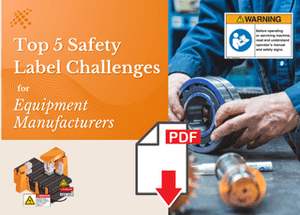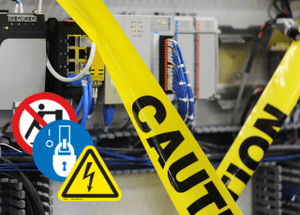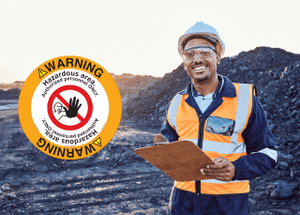Using Bilingual or Multilingual Labels and Signs to Maximize Safety

Using Bilingual or Multilingual Labels and
Signs to Maximize Safety
What Spanish is to Latin America, English
is to North America – far and away the most common language. Despite this,
here's another fact of the matter: America is linguistically diverse, evidenced
in Census reports and the languages spoken at home, a trend that business
owners increasingly must account for to more effectively communicate safety.
To say that more families in America are bilingual is a massive understatement. For instance, in 2015 – with an estimated 63.2 million residents in the U.S. – roughly 1 in 5 spoke a language other than English at home, according to analysis from the Center for Immigration Studies (CIS). That's up 3.6 percent from 2010.
Two years later, non-English languages are even more common within the confines of home. Indeed, 66.5 million residents age 5 and above spoke two or more languages - two times the total from 1990. Confined to America's five largest cities, nearly half of their respective populations speak something aside from English. Additionally, in dozens of cities, the vast majority of locals speak multiple languages, topping 90 percent in Laredo, Texas, 90 percent in East Los Angeles and 95 percent in Hialeah, Florida.
Spanish Speakers in the U.S. – And the Advantages of Diversity
Given that a significant portion of the U.S. population has Hispanic roots, it
likely comes as no surprise that Spanish is No. 2 to English in terms of the
top languages. Indeed, Spanish speakers rose by 4 million between 2010 and
2017, according to the CIS. But other less common languages have made similar inroads,
with Telugu up 86 percent over the same span, Arabic and Hindi rising 42
percent each and Urdu increasing by approximately 30 percent.
A more diverse workplace isn't only a reality, but may be an advantage over competitors. Millennials are more likely to apply with companies that show evidence of inclusiveness. In a separate study conducted jointly by the Institute for Public Relations and Weber Shandwick, approximately 47 percent of millennials said they considered diversity and inclusion a key component in evaluating businesses during the job hunt. This compared to 37 percent of baby boomers who felt similarly and 33 percent of Gen Xers.
Europe’s Diverse Workforce
Multicultural workforces aren't unique to the U.S., of course. They're
increasingly common throughout the world. For example, a European Commission
study found that a majority of Europeans – 53 percent – spoke more than one
language on the job and 45 percent felt their bi- or multilingual capabilities
enabled them to land a better job as a result.
In some countries, speaking in more than one language is nearly unanimous, found among 99 percent of citizens in Luxembourg, 97 percent of Slovaks and 95 percent of Latvians, the aforementioned study revealed.
Why Safety Incidents Occur
Communication is key to understanding. When it breaks down, signs get missed
and accidents occur, resulting in minor injuries at best to fatalities at
worst. According to the National Safety Council, workplace injuries occur once
every seven seconds, nearly every one of them avoidable.
Although there are many strategies to reducing these incidents on the job, posting safety signs and labels in languages other than English is a great start. Here are a few key steps to ensure your workers of all backgrounds remain fully aware of accidents waiting to happen – and you stay in compliance with best practices and regulations.
- Use
Bilingual and Multilingual Safety Labels and Signs
As work environments are becoming more diverse, communicating safety across language barriers has become a critical and complex issue. Translated bilingual or multilingual safety labels and signs are increasingly becoming the right choice for many organizations. Hispanics account for a growing share of today's workforce. Even though they may speak English, they may not be as conversant with it as they are Spanish. Given this, post separate signage that uses the same symbols and colors but with the verbiage of the Spanish equivalent, such as "Peligro" for "Danger" or "Cuida Tu Paso" for "Watch Your Step." Alternatively, you can use the same signage but have the Spanish equivalents underneath. - Provide
Multilingual Awareness Training
While the Occupational Safety and Health Administration (OSHA) doesn't expressly require business owners to post signage in more than one language, OSHA does point out that training methodologies need to be clear and unambiguous, or more specifically, in a manner that ensures "information [is presented] in a manner that employees receiving it are capable of understanding." Failure to do so can increase the risk of an accident, as was found in a 2009 study. The researchers found Hispanic workers who had trouble speaking English fluently were at a greater susceptibility of injury due to language barriers. Multilingual awareness training that's accompanied by language appropriate safety signage can make the transition smoother for ethnically diverse workforces, ensuring that everyone is on the same safety page. - Follow
ANSI Z535’s Guidance
You may not know where to begin if a more diversified workforce is new to you. That's where ANSI Z535 comes in handy. This standard is widely considered the best practice for communicating lurking dangers so they get noticed and observed. For example, in addition to including the language that your workers speak the most fluently, ANSI says the use of symbols should be utilized as well "to better communicate the sign hazard information across language barriers." These include downward-pointing arrows for voltage dangers and moving parts depictions for crush and cutting hazards. - Know
the Requirements for Product Manufacturers Shipping Internationally
The requirements are different for products being sold into Europe, where the EU Machinery Directive must be followed. Its section 1.7.1 states that when words need to be used in warnings, they must be translated into the language of the country where the machine is placed on the market or into service. On request, additional languages can be asked for by the purchaser. - Keep
Messages Succinct
Wordy labeling and signage can be hard to read, which is why you rarely see it. It may be necessary in certain circumstances, however. ANSI recommends directing readers – in multiple languages where appropriate – to another source in these instances, such as owner's manuals or online resources. Using wording that's the chosen language of your workforce is more than being sensitive to their culture. It's about their physical well-being above all.
Once you determine that one or more additional languages are needed for your labels or signs due to your audience or international requirements, it’s important to choose a partner that can provide an expert translation that considers dialects and context.
Clarion has the safety labels, signs and tags that get read and noticed. Plus, our translation service capabilities are second to none. We can translate in over 30 languages, taking into account the nature of the hazard and dialects so that warnings speak directly to your audience in a precise manner that they understand. Questions about how to best implement compliant, best practice-based bilingual safety signage? Reach out to Clarion Safety today!



